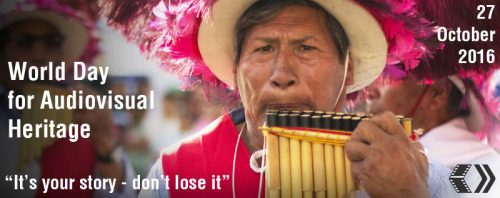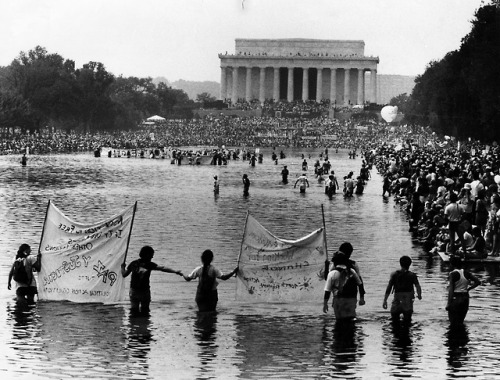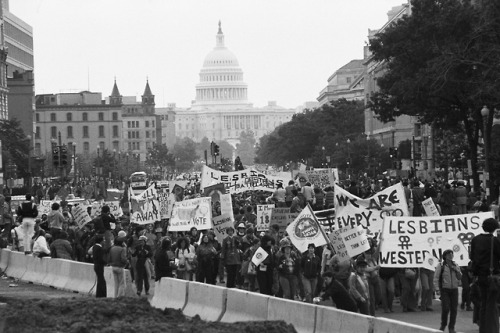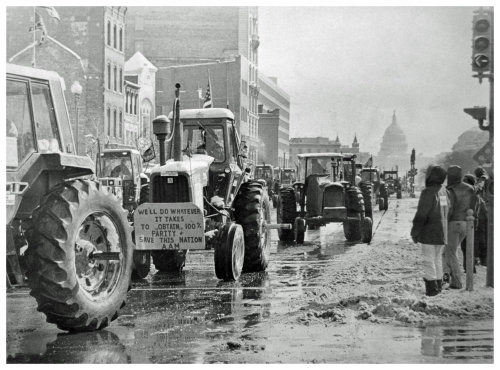#nprchives
Picture the Past with NPR Stories
There are hundreds of thousands of stories in the #NPRchives, containing millions of words. We aggregated the most-used words from @npr story titles over the past five decades. Like puzzle pieces, they can be arranged to discover patterns and tell a new story about the past. Look closely.
This project was created using Artemis, NPR RAD’s searchable database.
It’sWorld Day for Audiovisual Heritage!
To celebrate, organizations around the world are showcasing their sound and moving image collections to remind us all that these records of collective memory are both wonderful and fragile.
Here at NPR, the Research, Archives & Data Strategy team (RAD, formerly the NPR Library) protects and preserves NPR’s audio archives. Our programming was first heard on-air on April 20, 1971, starting with Senate hearings about the war in Vietnam. (C-SPAN had yet to be created.) NPR’s first episode of All Things Considered debuted a few weeks later on May 3, 1971.
In 1972, NPR created the Program Library, with a mission to make programs available for production and broadcast purposes, as well as for historical and scholarly research. In 1976, NPR entered into partnerships to make the Program Library publicly accessible. The ‘Public’ part of National Public Radio is really important to us, and it’s a big part of why we do the work we do to make sure people now and in the future can listen to and learn from our collection.
Over the past 45 years, NPR has used several new types of audio media, from open reel tape to optical CD to digital WAV files. These formats reflect the best available materials of the time period in which they were created, but they are also in danger of degradation. Right now, almost 94,000 hours of NPR audio are at-risk, stored on either tape or CD.
NPR’s RAD team continues to collect, assign metadata and create access to programming like All Things Considered, keeps track of NPR’s latest podcasts, and looks to the future for what will come next. RAD collections also include raw audio, images, documents and objects related to NPR journalism and radio broadcasting. Our digitized and born-digital collections are accessible in our in-house content management system, Artemis, and are starting to grow beyond program audio as NPR content expands into music videos like Tiny Desk Concerts and live social media video on our Facebook pages.
When we say the ‘Public’ part of NPR is important to us, we mean it. We are making every effort to allow for wider public access to our collections. But first, we must preserve and digitize!
-NPR RAD intern Greta Pittenger
Post link
AsNPR covers the 50th Anniversary of the 1969 Stonewall riots, we visit the archives to listen to NPR’s coverage of the first National March on Washington for Lesbian and Gay Rights in 1979, ten years after Stonewall.
In the All Things Considered piece, we hear activist and comedian Robin Tyler addressing the crowd at a rally. She declares that gay and lesbian people are not responsible for the violence committed against them.
“…and they dared to call us violent. Well they don’t have to tell us about violence because they have violated us since the beginning of time. They have violated us in prisons, they have violated us in mental institutions and by behavior modification; they have alienated us from our parents and taken away our children. And they have told us, one of the worst violations of all, that closets stand for privacy and not for prison. So don’t tell us about violence!”
– Robin Tyler, 1979
Gay rights activism and support has evolved over the years, from well before the Stonewall riots to the Pride rallies and marches happening throughout America in 2019.
In Radically Normal: How Gay Rights Activists Changed The Minds Of Their Opponents, NPR’s social science podcast Hidden Brain tackles how American opinions of LGBTQ rights have changed over time.
Evan Wolfson, a proponent of marriage equality since the 1990’s, speaks about how the gay rights movement was able to grow its support:
“In order to really succeed, it was not about just simply asserting our own and talking to ourselves. We had to find a way of bringing the majority of others - who are, of course, the majority - to a better understanding of who we are and a more capacious understanding of freedom.”
– Evan Wolfson, 2019
Posted by Vanessa Barker, NPR RADintern
Jobs, Peace, and Freedom, All Things Considered, 08/27/1983
In 1983, twenty years after Dr. Martin Luther King Jr. delivered his “I Have a Dream” speech, tens of thousands of people reconvened on the National Mall for the Jobs, Peace and Freedom March. March coordinators intended to rally a diverse group of people and causes to expand the fight for civil rights.
“20 years ago we came here, most of us was scared. We ain’t scared today, baby.”
-Dick Gregory
The digital preservation of this audio has been made possible in part by the National Endowment for the Humanities. Researcher Laura Garbes contributed to this post.
Image: Jim Wilson / The Boston Globe / Getty Images / 1983.
Post link
The National March on Washington for Lesbian and Gay Rights, All Things Considered, 10/14/1979
All Things Considered recorded the voices of speakers, protesters and onlookers at the National March on Washington for Lesbian and Gay Rights in October 1979. The march was one of the first large-scale national demonstrations for gay and lesbian rights. Organizers sought federal anti-discrimination laws to protect gay and lesbian individuals and advocated for the inclusion of sexual orientation as a protected status within the Civil Rights Act of 1954.
“Visibility is protection. Visibility is a way to legislation. And visibility is something that brings others out and gives them courage.”
-Demonstrator at the 1979 National March on Washington for Lesbian and Gay Rights
http://pd.npr.org/anon.npr-mp3/npr/atc/1979/10/19791014_atc_gayrights.mp3
The digital preservation of this audio has been made possible in part by the National Endowment for the Humanities. Researcher Laura Garbes contributed to this post.
Image: Bettman / Getty Images / 1979.
Post link
Tractorcade,All Things Considered, 02/05/1979
In February 1979, All Things Considered visited the National Mall to record a spectacle known as Tractorcade. A convoy of farmers from the American Agriculture Movement drove their tractors thousands of miles in winter conditions from places like Texas, Ohio and Colorado, to rally in support of farmworkers’ rights to earn a living wage.
“The way we…bring our point across…is by bringing the tractor. The tractor is out of place in Washington, D.C.”
- A member of the 1979 tractor convoy
The digital preservation of this audio has been made possible in part by the National Endowment for the Humanities. Researcher Laura Garbes contributed to this post.
Image: Bill Wilson / 1979. Reprinted with permission of the DC Public Library, Star Collection © Washington Post.
Post link
The city of Washington, D.C. holds a symbolic place in American culture as a space to voice a diversity of ideas, views and agendas. @npr has reported on the political tradition of marching on Washington since 1971 when All Things Considered (ATC) debuted with a sound portrait of one of the largest anti-Vietnam War demonstrations in history.
We’re listening back through the archives and rediscovering stories about marches on Washington that reflect NPR’s original mission to represent a “genuine diversity of regions, values, and cultural and ethnic minorities which comprise American society [and]… speak with many voices and many dialects.”
Image: U.S. Information Agency / National Archives & Records Administration / 1963.
Post link
Discovering the Neighborhood of Make-Believe in the NPR archives
In the 1978 Christmas Eve broadcast of NPR’s Weekend All Things Considered, Mr. Rogers explains his decision to invite Santa to his Neighborhood of Make-Believe — he wanted it on the record that Santa would never watch children while they’re sleeping. This nearly 40 year-old interview with the star of Mister Rogers’ Neighborhood was the first delightfully unexpected discovery I made while searching through NPR’s in-house digital archive. The interview was contemplative and funny and, lucky for me, there was more. Mr. Rogers was interviewed on NPRover a dozen more times between 1975 and 2002. What’s special about these interviews is their incredibly slow pace. And it’s not just the way Mr. Rogers talks–it’s the way he reveals the thoughtfulness and deep compassion for the perspective of children that went into every creative choice on the show.
Here are the greatest hits from nearly thirty years of NPR interviews with Mr. Rogers.
All Things Considered, 6/5/1975
Bob Edwards introduces him by saying, “Mr. Rogers is, for adults anyway, almost unbearably slow paced.”
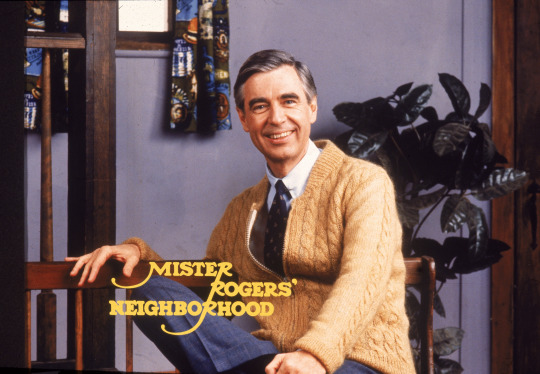
Hulton Archive/Getty Images
Bob Edwards: Mr Rogers is, for adults anyway, almost unbearably slow-paced. Steven Banker asked Fred Rogers to account for the difference.
Mr. Rogers: I think it depends who you are. I happen to be a person who is rather well-modulated in his way of speaking and in his way of dealing with feelings. And so consequently, I am myself. And I think maybe that’s the most important thing that I can be to children on television, is myself.
All Things Considered, 12/12/1979
39 days into the Iranian Hostage Crisis, Mr. Rogers returns to All Things Considered to discuss with Susan Stamberg how parents can use this time to teach their children to, “develop empathy for all sorts of people.”

NPR Archives
Susan Stamberg: A crisis situation presents a tremendous opportunity to really teach lessons in morals and values, doesn’t it? It’s a way to acknowledge the fact that there’s anger, but you can go beyond that and say, but this is the wrong way to express your anger. Taking prisoner is the wrong way.
Mr. Rogers: I have trouble with right and wrong. But I know what you’re saying. And I think that it’s more helpful to say, this is not the way we do it in our family. This is not the way we would do it in our country. And then go on to say how we as a family feel. And our notion of how we as a country feel is such and such. And this gives the kids a very secure sense of belonging to a family, to a country that has these ideals.
Morning Edition, 3/18/1983
Eight years after his initial interview with Mr. Rogers, Bob Edwards admits he has converted to the slow-speed philosophy of the Neighborhood.

Getty Images
Bob Edwards: I have a confession, I’m almost 36 years old and I enjoy your show. It’s not so much what you’re doing with children I mean I see that now as a father, it’s television and something is going on there. You use the medium so well.
Mr. Rogers: Anybody likes to be in touch with somebody who’s honest. We all do… I think that the box, there’s a certain safety in the box. And I wonder — when children see me on the street they invariably say, how did you get out? And I try my best to explain what television is and that it’s a picture and that I’m a real person and that’s why I could be there at that moment. They think that you’re so big. And I invariably say to them, you know the scary things you may see on television, could never come and visit you.
Fresh Air, 11/13/2002
Mr. Rogers appears on NPR for the last time a year before he passed away in 2003. In this Fresh Air interview with Barbara Bogaev he reveals more about his life outside the “Neighborhood of Make-Believe” than in any of his previous appearances.
Mr. Rogers: I had every imaginable childhood disease, even scarlet fever, and so whenever I was quarantined—and you know, they used to quarantine people for chicken pox and all of those things—I would be in bed a lot, and I certainly knew what it was like to use the counterpane as my neighborhood of make-believe, if you will. But I had puppets.
Barbara Bogaev: You mean, the window? You would use what? Finger puppets or shadow puppets, or what?
Mr. Rogers: And things on the bed. I would put up my knees and they would be mountains, you know, covered with the sheet, and I’d have all these little figures moving around, and I’d make them talk. And I can still see my room, and I’m sure that was the beginning of a much later neighborhood of make-believe.
Sarah Wilson is a public history intern with NPR’s RADteam. She works with the RAD team to uncover NPR history and collect oral history interviews with notable current and former staff.

